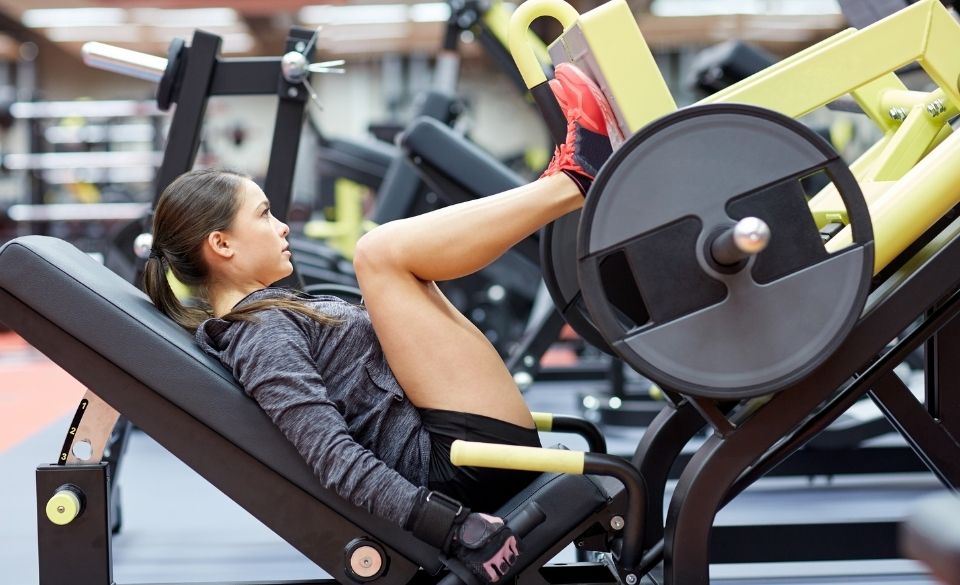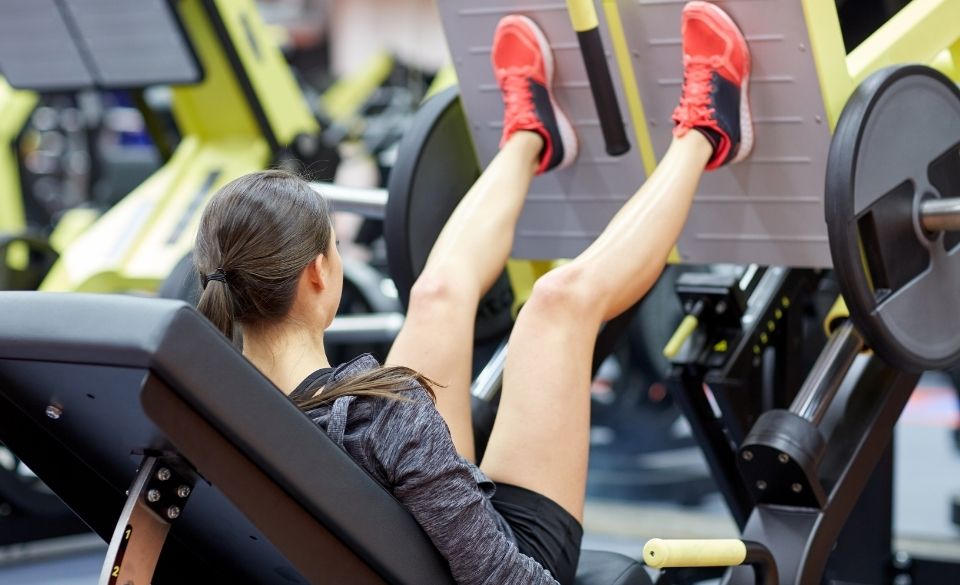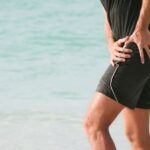
Leg Press Foot Placement – How To Use Leg Press Machine Correctly
Page Contents
If you are looking to build lower body strength, from the glutes to the lower legs, the leg press is an excellent exercise.
However, it is important to know how to use the leg press machine correctly, and to have the right leg press foot placement.
In this article, we discuss how to use the leg press and how to perform the exercise correctly. We also talk about foot placement when using a leg press. This way you are less likely to get injured and gain the benefits from this lower body exercise. Keep reading to find out more.
What Is A Leg Press Machine?
First, before you learn what a leg press machine is, you need to understand what the leg press exercise is.
The leg press exercise is a compound exercise that uses a weight machine to push the weight away from your body with your legs. This machine is called a leg press machine.
The leg press machine is used to develop the athlete’s lower body strength, from the gluteus maximus down to the lower leg.
If used correctly, the leg press can help to strengthen the knees and allow you to lift much heavier free weights. However, if done incorrectly, it has the potential to cause injury, especially in the knees.
The leg press workout can be performed in multiple variations. For example with one leg or the use of bands. However, leg press foot placement is important, so we will discuss this later in the article.

How Do You Use The Leg Press?
While the leg press is a relatively basic machine to learn, knowing how to use it correctly can prevent injuries in the knees and upper legs.
Before starting make sure you have adequate weight on the machine for your fitness level. Everyone is different, so start with less weight than you think you can lift. This way you can focus on technique before pushing a heavier weight.
To do the leg press the right way, start by sitting down at the machine with your back and head resting on the support.
Next, place your feet onto the footplate, and spread them. Your feet should be hip-width apart and your heels flat before you start. It is also important to keep your bottom flat against the seat, so try not to raise it during each repetition.
Make sure your feet are not too high on the plate otherwise you may stress your quadriceps too much. Alternatively, too low and you may find that it adds extra stress to the knees. Instead, keep your knees in line with your feet, and don’t turn them inwards or outwards.
Now, brace your abdominal muscles, and push the platform away using your heels and forefoot. Focus on using your heel and forefoot rather than the front of your foot or toes.
Extend your legs slowly while keeping your head and back flat against the support. Once you are at the top of the movement, pause for a few seconds, and don’t you don’t lock out your knees in the process.
Then slowly return the footplate to the starting position while inhaling. Make sure you keep your back and feet flat during this phase.
It is important throughout the whole exercise that you keep the body in line, you can also use the handles to provide adequate support if you struggle to keep the body in alignment.
If you are new to the leg press machine, start modestly with 2-3 sets of 10 repetitions. Then advance from there.
Leg Press Foot Placement
Leg press foot placement is important when doing the leg press exercise, as it can work slightly different muscles and affect the alignment of your body. The five different types of foot placements are:
– Regular stance
– High feet stance
– Low feet stance
– Narrow stance
– Wide stance
Unfortunately, many people often choose the wrong foot placement required to work on the right muscle groups. This results in poor technique, less effective training, and a higher risk of injury.
To avoid these mistakes you need to choose the correct leg press foot placement.
Regular foot placement – Feet in the middle of the platform and shoulder-width apart. This placement works the quadriceps, glutes, and hamstrings.
Feet high – Feet high up on the platform and shoulder-width apart. This placement works the glutes and hamstrings
Feet low – Feet in the middle of the platform and shoulder-width apart. This primarily works the quadriceps and calf muscles.
Narrow feet – Narrow foot placement is when you position the feet in the middle of the platform slightly narrower than your shoulders. This works the quadriceps mostly.
Wide feet – Positioning your feet 1.5x your shoulder width will help work the glutes, hamstrings, and abductors more.
The leg press machine usually uses a 45-degree set of tracks. However, some gyms use machines that load the weight via a horizontal track. That means for some people they are unable to load heavy enough weight when doing this exercise. So, it is worth checking out if you are experienced in the gym.
What Muscles Does The Leg Press Work?
Leg press mainly works your quadriceps, hamstrings, and glutes. However, changing stance can often affect the load on these muscles. Because of this, it is important to vary your stance every few weeks, so you can benefit from this type of lower body workout.
If you are unsure which is the right leg press foot placement, to begin with, start with a neutral stance first. That way it will help you hone your technique before moving into other stances.
Once you are comfortable, you can start focusing on key muscles in the lower and upper legs. This will help a stronger lower body as well as strengthen some weaker muscles you don’t usually focus on.
Like any exercise in the gym, if you are unsure how to do it correctly, speak with a personal trainer or ask for help at the gym. That way you can prevent injuries in the future and help work the correct muscles in the process.



